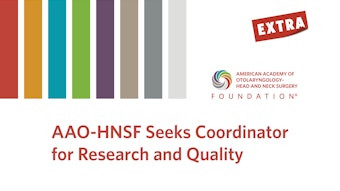Enhanced Recovery After Surgery: Optimizing Perioperative Patient Care
Enhanced recovery after surgery (ERAS) programs provide an evidence-based care pathway to help patients recover more quickly. Building an ERAS program at your institution can lead to decreased complications, shorter hospital stays, and fewer readmissions.
Carol Bier-Laning, MD, MBA, Karthik Rajasekaran, MD, Aru Panwar, MD, and Carol M. Lewis MD, MPH

ERAS programs start in the pre-operative phase with patient education, risk stratification, and optimization of comorbidities, including nutritional status and functional ability. Intra-operative measures are aimed at improving safety and efficiency. Post-operatively, patient-centered pathways strive to minimize patient symptom burden and emphasize functional rehabilitation. Important to these pathways are recommendations for multimodal analgesia (MMA) with less reliance on opioids, especially since the side effects of opioids tend to interfere with functional rehabilitation, and intentional decision-making regarding tubes, lines, and drains to encourage patient mobility.
This article will discuss literature evaluating ERAS program effectiveness, strategies for MMA, and the pearls and pitfalls of building an ERAS program.
Evaluating the Value of ERAS Pathways
To better understand the value of ERAS protocols, we focused on evaluating the effectiveness of ERAS protocols across diverse patient populations. A significant portion of our investigation centered on assessing ERAS protocols in patients undergoing head and neck cancer surgery with free flap reconstruction.
We conducted a systematic review and meta-analysis involving 18 studies and encompassing over 2,600 patients, with compelling results.2 Implementation of ERAS protocols led to a notable mean reduction of approximately four days in hospital stays. Furthermore, patients subject to these protocols exhibited a diminished likelihood of hospital readmission and a lower incidence of wound complications.
Expanding our research scope, we delved into the realm of thyroid and parathyroid surgery, carrying out a comprehensive analysis of over 3,000 patients.3 Our systematic review and meta-analysis both demonstrated a significant decrease in hospitalization duration and associated costs. This positive outcome remained consistent across various subgroups encompassing parathyroidectomy, thyroid lobectomy, and total thyroidectomy patients.
In our examination of pediatric patients undergoing cleft repair (a cohort of 425 patients), the implementation of ERAS protocols yielded noteworthy benefits.4 These included a substantial reduction in total postoperative morphine consumption and a significantly shorter time to the initiation of initial feeds.
Although our focus has primarily been on the above patient groups, it is worth noting that limited data are available for other otolaryngology surgeries. Nonetheless, the existing data suggest favorable outcomes without discernible downsides, further supporting the efficacy of ERAS protocols in diverse surgical scenarios.
Strategies for Multimodal Analgesia
Otolaryngology-head and neck surgeons have an important role in responsibly prescribing opioid and nonopioid-based analgesics in a variety of care settings. Studies suggest that more than 50% of prescribed opioids after common otolaryngology procedures are left unused.5 Opioid analgesics available in the community may be prone to misuse, and most non-medical users of prescription opioids may obtain them from family or friends.7 Clinicians must balance their ethical responsibility towards minimizing suffering for their patients, while ensuring harm reduction for the individuals who receive legitimate prescriptions for opioid analgesia and the communities in which they live. The desire to offer safe and effective analgesia choices has led to heightened interest in MMA among otolaryngology-head and neck surgeons and many diverse clinical disciplines.
The MMA framework, an important component of ERAS pathways, relies on a multipronged and stepladder approach to achieve analgesia after common otolaryngology surgical procedures. MMA approaches recognize that there are multiple points of intervention to affect meaningful analgesia using a variety of non-pharmaceutical and pharmaceutical options, which include both opioids and nonopioid agents such as anti-inflammatory drugs, acetaminophen, local anesthetics, neuromodulators, and others. Such an approach may reduce over-reliance on opioids, thus reducing side effects that are unique to opioid analgesia and the potential for addiction or misuse.
MMA approaches have been found to be safe and feasible for common otolaryngology procedures including outpatient thyroid, parathyroid and salivary gland surgery. Most patients undergoing such procedures can avoid opioid prescriptions upon discharge altogether.7,8 In 2021, the American Head and Neck Society published a consensus statement recommending that multimodal, non-opioid medications should be considered for first-line pain management in patients undergoing head and neck endocrine surgery, and limited opioid prescriptions may be used for patients who experience pain refractory to first-line nonopioid analgesics.9 To enhance clinician and patient engagement with such strategies and guide clinical care pathway development, the AAO-HNSF has published clinical practice guidelines that highlight and endorse the use of multimodal treatment plans for managing pain, promote non-opioid analgesia as first-line treatment for postoperative pain, and recommend limiting opioid prescription to the lowest effective dose and duration following common otolaryngologic procedures.10
Multiple other investigations have also reaffirmed that MMA pathways that incorporate nonsteroidal anti-inflammatory drugs and acetaminophen resulted in reduced in-hospital opioid use, reduced opioid prescription on discharge, and demonstrated comparable safety when used in complex head and neck microvascular reconstruction and transoral surgery.11-13
Note that MMA strategies must account for specific clinical needs, involve both patient and provider input (resulting in shared decision-making), and rely on validated pathways that build on local and global experiences with such approaches. MMA pathways may help us reach the goal of safe, effective and actionable pain management for the patients we serve. Although promising, these results have thus far been observed through research that is largely retrospective in its scope and limited by level of strength of evidence. Experiences with MMA in patients undergoing otolaryngology-head and neck surgery procedures must be carefully studied and validated in diverse procedures, care settings, and preferably through carefully designed prospective research protocols.
Building an ERAS program: Pearls and Pitfalls
If you are a leader at your institution, you may be very familiar with the components and benefits of an ERAS program, but it may be difficult to know where and how to start implementing such a program, especially for more complex otolaryngology patients. As noted above, the benefits of an ERAS program have been well established in the literature and include decreased complications, length of stay, and readmissions. These endpoints are important to highlight as you talk with team members and especially the leadership at your institution. Third-party payers are increasingly looking to reimburse healthcare costs based on outcomes. So, it is important to emphasize that although an ERAS protocol may have fixed start-up costs, these can be offset, likely over a short timeframe, by long-term cost savings, higher reimbursements and lack of financial penalties owing to improved quality measures.
An ERAS program is more than a set of orders that is created and pushed out. All stakeholders involved in the care of the target patient population need to be involved from the beginning. In addition to surgeons, this may include anesthesiologists, nurses (outpatient and inpatient), advance practice providers (inpatient and outpatient), social workers and/or care managers, ancillary healthcare providers such as speech and physical therapists, and trainees, including residents and fellows. If possible, it is important to have quality improvement specialists and/or operational excellence members involved, one of whom would be well positioned to act as a project manager. The project manager should work together as a dyad with the physician champion to outline the planned work, maintain work products, manage meetings, and document the progress of the work. Before creating the protocol, it is also important that your colleagues and leadership are aware of the project, its importance, and the strategy to create and institute your ERAS program.
An ERAS program is best tackled by dividing it into smaller sections. One useful way to do this is to divide the work based on the perioperative timeframe (preoperative, day of surgery, intraoperative, postoperative). Stakeholder workgroups can then work on the timeframe with which they are most familiar. Preoperative components might include: a "what patients and caregivers can expect" letter, preoperative immunonutrition and carbohydrate-loading drinks, standard labs, and a patient education booklet. The day of surgery and intraoperative timeframes can include intraoperative patient warming, glucose management, deep vein thrombosis prophylaxis, pain and postoperative nausea and vomiting medications. Standardized pain management, timing and type of nutrition, ancillary services consults, and additional resources for patients and families may be included in the postoperative portion of the protocol (Figure 1).
 Figure 1. Example of components of an ERAS protocol for otolaryngology free flap patients.
Figure 1. Example of components of an ERAS protocol for otolaryngology free flap patients.
While working on your protocol, be sure to make use of the literature and learn what has been done by other groups within your institution. A good place to start would be connecting with your colorectal surgical colleagues, because the ERAS concept was conceived by colorectal surgeons and launched with their patients. It is likely that many portions of your planned ERAS protocol are already in place, which will save you from duplicating efforts.
In summary, ERAS is a protocol encompassing the entire perioperative timeframe, with the goal of optimizing and standardizing care. Originally created for colorectal surgical patients, benefits, including decreased length of hospital stay, decreased readmissions, and decreased wound complications, have been documented for various otolaryngology surgical populations. Although an important component of any ERAS protocol includes decreasing opioid utilization through MMA, there are many components that make up an effective ERAS program. Including information on these improved quality metrics and their financial implications is important when pitching an ERAS program to leadership. Including all stakeholders in the creation of an ERAS protocol builds enthusiasm and buy-in, while making use of existing ERAS components streamlines the process. Understanding the components of ERAS and its effect on improving patient outcomes is critical for all clinicians to provide high quality, compassionate, consistent, and cost-conscious care.
References
- Dort, Joseph C., D. Gregory Farwell, Merran Findlay, Gerhard F. Huber, Paul Kerr, Melissa A. Shea-Budgell, Christian Simon, et al. “Optimal Perioperative Care in Major Head and Neck Cancer Surgery With Free Flap Reconstruction: A Consensus Review and Recommendations From the Enhanced Recovery After Surgery Society.” JAMA Otolaryngology–Head & Neck Surgery 143, no. 3 (March 1, 2017): 292–303. https://doi.org/10.1001/jamaoto.2016.2981.
- Chorath, Kevin, Beatrice Go, Justin R. Shinn, Leila J. Mady, Seerat Poonia, Jason Newman, Steven Cannady, Peter C. Revenaugh, Alvaro Moreira, and Karthik Rajasekaran. “Enhanced Recovery after Surgery for Head and Neck Free Flap Reconstruction: A Systematic Review and Meta-Analysis.” Oral Oncology 113 (February 2021): 105117. https://doi.org/10.1016/j.oraloncology.2020.105117.
- Chorath, Kevin, Neil Luu, Beatrice C. Go, Alvaro Moreira, and Karthik Rajasekaran. “ERAS Protocols for Thyroid and Parathyroid Surgery: A Systematic Review and Meta‐analysis.” Otolaryngology–Head and Neck Surgery 166, no. 3 (June 15, 2021): 425–33. https://doi.org/10.1177/01945998211019671.
- Shin, Max, Connor Wagner, Aman Prasad, Louis-Xavier Barrette, Kevin Chorath, Alvaro Moreira, and Karthik Rajasekaran. “Enhanced Recovery After Surgery for Pediatric Cleft Repair: A Systematic Review and Meta-Analysis.” Journal of Craniofacial Surgery 33, no. 6 (February 7, 2022): 1709–13. https://doi.org/10.1097/scs.0000000000008544.
- Dang, Sophia, Alexander Duffy, Jonathan C. Li, Zachary Gandee, Tanvi Rana, Brittany Gunville, Tingting Zhan, et al. “Postoperative Opioid‐prescribing Practices in Otolaryngology: A Multiphasic Study.” The Laryngoscope 130, no. 3 (June 21, 2019): 659–65. https://doi.org/10.1002/lary.28101.
- Jones, Christopher M, Leonard J Paulozzi, and Karin A Mack. “Sources of Prescription Opioid Pain Relievers by Frequency of Past-Year Nonmedical Use United States, 2008-2011.” JAMA Internal Medicine 174, no. 5 (May 2014): 802–3. https://doi.org/10.1001/jamainternmed.2013.12809.
- Oltman, Justin, Oleg Militsakh, Mark D’Agostino, Brittany Kauffman, Robert Lindau, Andrew Coughlin, William Lydiatt, Daniel Lydiatt, Russell Smith, and Aru Panwar. “Multimodal Analgesia in Outpatient Head and Neck Surgery: A Feasibility and Safety Study.” JAMA Otolaryngology-- Head & Neck Surgery 143, no. 12 (December 1, 2017): 1207–12. https://doi.org/10.1001/jamaoto.2017.1773.
- Militsakh, Oleg, William Lydiatt, Daniel Lydiatt, Erik Interval, Robert Lindau, Andrew Coughlin, and Aru Panwar. “Development of Multimodal Analgesia Pathways in Outpatient Thyroid and Parathyroid Surgery and Association With Postoperative Opioid Prescription Patterns.” JAMA Otolaryngology-- Head & Neck Surgery 144, no. 11 (November 1, 2018): 1023–29. https://doi.org/10.1001/jamaoto.2018.0987.
- Ferrell, Jay K., Maisie L. Shindo, Brendan C. Stack, Peter Angelos, Gary Bloom, Amy Y. Chen, Louise Davies, et al. “Perioperative Pain Management and Opioid‐reduction in Head and Neck Endocrine Surgery: An American Head and Neck Society Endocrine Surgery Section Consensus Statement.” Head & Neck 43, no. 8 (June 3, 2021): 2281–94. https://doi.org/10.1002/hed.26774.
- Anne, Samantha, James “Whit” Mims, David E. Tunkel, Richard M. Rosenfeld, David S. Boisoneau, Michael J. Brenner, John D. Cramer, et al. “Cgui.” Otolaryngology–Head and Neck Surgery 164, no. 4 (April 2021): 687–703. https://doi.org/10.1177/0194599821996303.
- Eggerstedt, Michael, Kerstin M Stenson, Emily A Ramirez, Hannah N Kuhar, Danny B Jandali, Deborah Vaughan, Samer Al-Khudari, Ryan M Smith, and Peter C Revenaugh. “Association of Perioperative Opioid-Sparing Multimodal Analgesia With Narcotic Use and Pain Control After Head and Neck Free Flap Reconstruction.” JAMA Facial Plastic Surgery 21, no. 5 (September 1, 2019): 446–51. https://doi.org/10.1001/jamafacial.2019.0612.
- Sayal, Navdeep R., Oleg Militsakh, Sarah Aurit, John Hufnagle, Lester Hubble, William Lydiatt, Daniel Lydiatt, et al. “Association of Multimodal Analgesia with Perioperative Safety and Opioid Use Following Head and Neck Microvascular Reconstruction.” Head & Neck 42, no. 10 (July 20, 2020): 2887–95. https://doi.org/10.1002/hed.26341.
- Rana, Tanvi, Kelly Daniels, Sophia Dang, Jonathan C Li, Cecilia G Freeman, Alexander Duffy, Joseph Curry, Adam Luginbuhl, Elizabeth Cottrill, and David Cognetti. “Postoperative Opioid-Prescribing Practices in Otolaryngology: Evidence-Based Guideline Outcomes.” Laryngoscope Investigative Otolaryngology 8, no. 1 (December 16, 2022): 313–21. https://doi.org/10.1002/lio2.990.




















